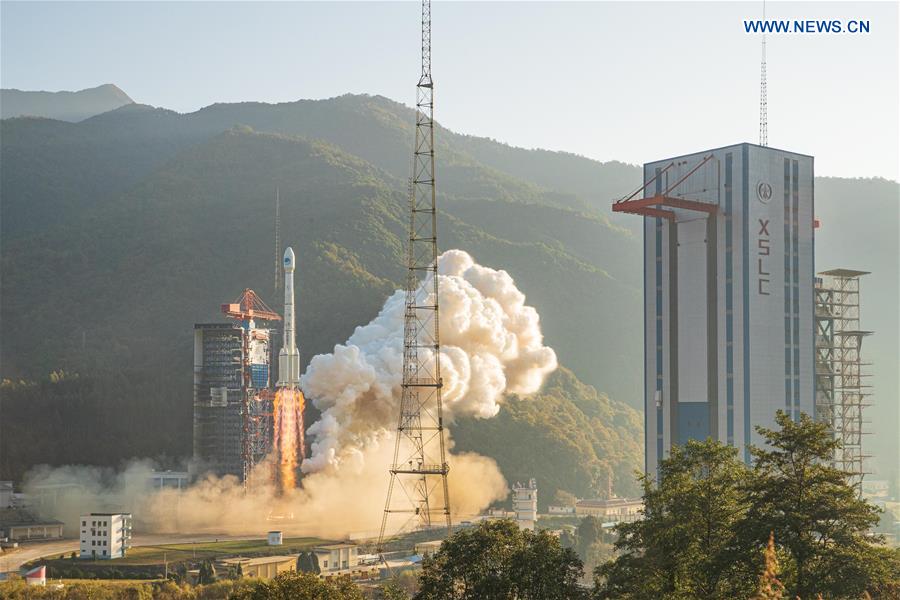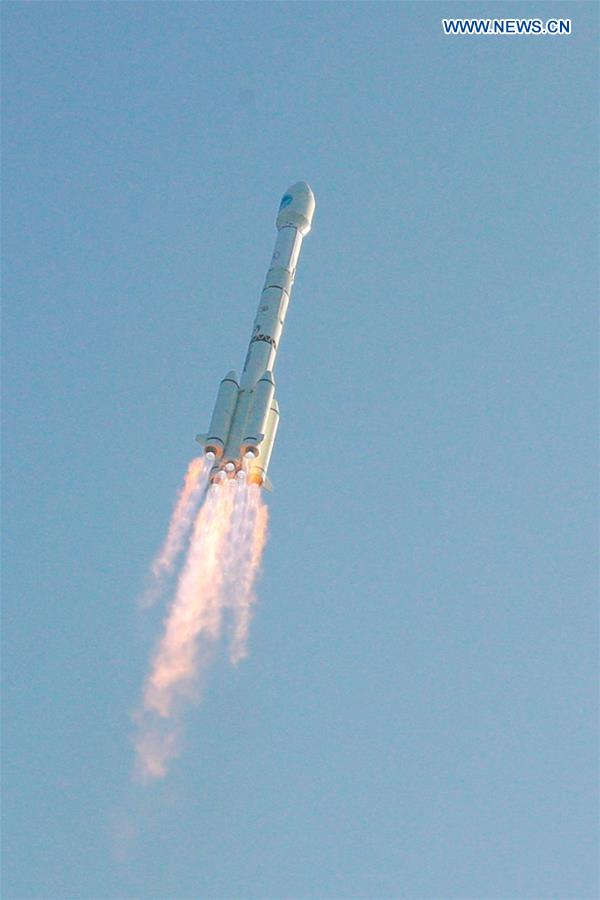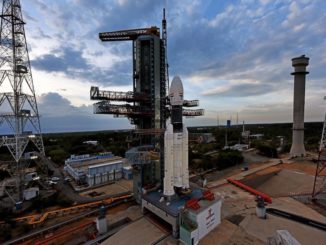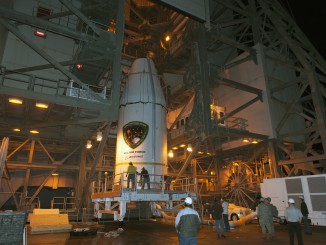
Maintaining a rapid-fire launch cadence to close out the year, China added two more Beidou satellites to its independent positioning, navigation and timing fleet Saturday with a successful launch aboard a Long March 3B rocket.
The Long March 3B launcher, standing 184 feet (56 meters) tall, lifted off from the Xichang space base at 0055 GMT Saturday (7:55 p.m. EST Friday), according to China’s state-run Xinhua news agency.
Fueled by a noxious mix of hydrazine and nitrogen tetroxide, the Long March 3B climbed away from the Xichang spaceport, nestled in a mountain valley in southwestern China’s Sichuan province. Heading southeast from Xichang, the rocket’s four strap-on liquid-fueled boosters shut down and jettisoned around two-and-a-half minutes into the mission, and the Long March 3B’s core stage switched off its four engines seconds later.
A video and images shared on the Chinese social media site Weibo showed damage to a village downrange from Xichang apparently caused by falling debris from the Long March 3B rocket. Images appeared to show pieces of a Long March 3B booster, a building on fire, and a destroyed motorcycle, plus reddish-brown clouds in the air, a sign of leaking toxic fumes from the rocket wreckage.
This is the aftermath downrange following a Chinese Long March 3B launch from Xichang early Saturday. And that yellow smoke is very toxic hypergolic propellant. Source: https://t.co/VEh5X8Ors0 pic.twitter.com/22IVIpyJOk
— Andrew Jones (@AJ_FI) November 23, 2019
Rockets launched from China’s most active launch sites drop their spent rocket stages over land. Videos on social media showing rocket wreckage amid homes, farms and roads are a common site after Long March rocket launches.
China has a newer launch base on Hainan Island, a geographic location that allows rockets to jettison boosters over the ocean, which is the practice for U.S., European, Japanese and Indian launchers. China’s newest generation of rockets are fueled by solid propellants, kerosene and liquid hydrogen, which are more environmentally friendly than hydrazine.
After separating the first stage and strap-on boosters, the Long March 3B’s second stage main engine ignited to continue the Long March 3B’s ascent into orbit, followed by second stage jettison and the start-up of the rocket’s two third stage YF-75 engines, fed by a super-cold mix of liquid hydrogen and liquid oxygen propellants.
A Yuanzheng upper stage deployed after the Long March 3B’s third stage completed its role in Saturday’s mission. The Yuanzheng stage ignited to place the two Beidou navigation satellites in a nearly circular orbit at an average altitude of 13,500 miles (21,800 kilometers), with an inclination of 55 degrees, according to tracking data published by the U.S. military.
Chinese officials declared the launch a success, completing China’s sixth orbital launch this month. There have been 28 orbital launch attempts from China this year — more than any other country — and 26 of the missions were successful.

The two satellites launched Saturday will enter the Chinese navigation network in medium Earth orbit, similar to the positions of navigation satellites in the U.S. military’s GPS fleet, Russia’s Glonass system, and Europe’s Galileo constellation.
Other groups of Beidou satellites fly in geosynchronous orbits more than 22,000 miles (nearly 36,000 kilometers) in altitude, either over the equator or on inclined tracks that move back and forth over the northern and southern hemispheres.
With Saturday’s launch, China has sent 51 Beidou navigation satellites into orbit since 2000. Some of those satellites were launched on test missions, and are no longer operational.
China could launch two more Beidou satellites before the end of the year, before adding a final batch of Beidou craft to the network in 2020 to allow the network to begin global service.
Email the author.
Follow Stephen Clark on Twitter: @StephenClark1.



